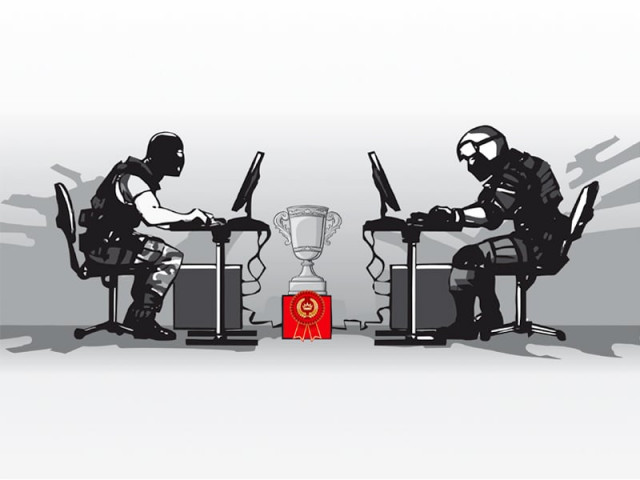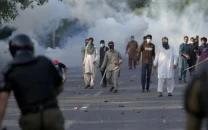Tech society: Global gaming
In recent years, professional gaming has become more than being ‘just a game’.

Gaming has always been, at its heart, competitive. From the earliest days, duelling with simple spaceships in Spacewar!, to the technical accomplishments of the recently released Battlefield 3, games have always relied on the players’ competitive streak.
But competing with an often-predicable computer opponent can often be a short-lived distraction, and many games released nowadays promote themselves on the strength and longevity of their multiplayer modes. For most gamers, this is an added extra; for some, it is a serious business. Professional gaming — also called esports — has grown considerably in recent years, with contests held between the world’s best players. For those few it can be a route to fame, success and big money.
The birth of pro-gaming is commonly attributed to the popular game Doom by id Software in 1993. Widely recognised for popularising the first-person shooter genre; Doom also allowed players to compete head-to-head over a local network. At the time only businesses and universities had both the networks and multiple computers able to run the game well but by the time its successors Doom 2 and Heretic were released, players at home were able to compete too, using pre-internet services to dial into dedicated servers.
In 1995, several companies including id Software and Microsoft hosted the world’s first offline gaming tournament, Deathmatch 95. This format, with gamers attending a single location and using standardised hardware, defined gaming tournaments ever since. Gamers competed head-to-head in preliminary stages online and winners from both the United States and Europe were brought to Microsoft’s campus in Redmond to play the final.
In 1997, id Software hosted the Red Annihilation contest to promote Doom 2’s successor, Quake, and offered something beyond the usual prizes — a Ferrari 328. The same year, the Cyberathlete Professional League (CPL) was established, an organisation that described itself as the pioneer in esports by attracting sponsors and offering cash prizes — often tens of thousands of US dollars — to winners.
With a model for money coming in, the CPL and other pro-gaming organisations quickly expanded worldwide. Prominent players and teams would often find corporate sponsors willing to pay travelling expenses, an eventual necessity as contests became increasingly globalised, and resulting in some who earned their living by competing in esport tournaments across the globe.
The games played at these tournaments are obviously ones allowing direct competition between individuals or teams of players. While genres such as sports and driving games are often represented, the most prominent are usually first-person shooters, one-on-one fighting games, or real-time strategy games. Counter-Strike, the 1999 modification to Valve’s Half-Life is still popular even today, just as long-time favourites such as the Street Fighter and Tekken series have represented fighting games, even leading to specific events such as the Evo Championship series. However, it is real-time strategy that came to define pro-gaming events. While titles such as Warcraft 3 and Defence of the Ancients are hugely popular, one game dominates the world esport scene: StarCraft.
Modern gaming usually celebrates the most technically advanced releases, but the popularity of StarCraft — over a decade old — cannot be underestimated. The Korean Times claimed that it accounts for 70 per cent of esports in the country, with five major leagues specially for it, including two run by television channels broadcasting the games. StarCraft has often been flippantly described as Korea’s national sport, and while that may not be technically true, its top players are treated like athletic heroes.
Taking advantage of the publicity and popularity of players, several corporations including Korea Telecom, Samsung and SK Telecom have employed teams, paying salaries that often exceed $100,000 for the top players. For some, even this seems like small money — Lee Yun Yeol, statistically one of the most successful players ever, signed up to a three year contract for approximately $690,000 with WeMade FOX, a professional gaming team, in 2007. On top of this, Lee also earned extra from endorsements of items such as gaming mice, claimed to be made to his standards for competition play.
However, even this pales in comparison to Lim Yo-Hwan who reportedly earns $400,000 a year — and like Lee, even more from endorsements — Lim’s fan club has over a million members, and his screen name of “BoxeR” was described by Escapist Magazine as synonymous with the sport in Korea. He even managed to continue playing during his mandatory two years of national service, founding a team to represent the Korean Air Force in professional competitions.
The need to continue playing and maintain skills is crucial for top players. As pro-gamer Jarom Severson told Wired magazine in 1999 “your average basketball player isn’t going to make it to the NBA, and your average gamer isn’t going to stand a good chance of making money playing games.” Pro-StarCraft gamers often claim to play for eight hours or more a day to become above average.
Knowledge of gaming strategies, and the ability to use them quickly are key, with a competition winning performance often making over three hundred actions a minute. The place these speed skills have in public awareness were made clear when South Korea’s Defence Minister justified an apparently slow response during the country’s confrontation with North Korea in November of 2010, saying “this isn’t StarCraft”. Even with these skills, the average pro-gamer is estimated to earn the equivalent of US$20,000 a year according to PBS. This, and the level of money wagered in bets, has led to scandals — in 2010, one of the biggest names in the sport Ma Jae-Yoon pleaded guilty to allegations of match-fixing, resulting in a lifetime ban for himself and ten other professional players, an event that shook the community of fans and players.
With increasing globalisation and the spread of technology — not to mention the ever-growing budgets involved in developing and promoting both games and hardware — it is likely that competitive gaming will continue to grow internationally.
Published in The Express Tribune, November 19th, 2011.



















COMMENTS
Comments are moderated and generally will be posted if they are on-topic and not abusive.
For more information, please see our Comments FAQ